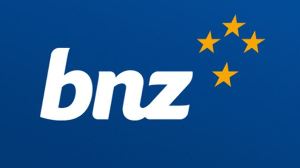
If key data, particularly the 7 August labour data and various inflation expectation measures are weak enough, then a cut could be on the cards.
ASB chief economist Nick Tuffley says every RBNZ meeting from now on will be conceivably ‘live’ and there could be cuts of 75bp by the end of the year.
Even if there is not a cut next month, the bank expects 25bp OCR cuts in both October and November as core inflation cools for both imported and domestic measures.
“A 25bp cut in November is the bare minimum of what the RBNZ needs to deliver over the rest of the year, Tuffley says.
He says importantly, the sequence of data revisions is now downwards.
“The various core inflation measures – including in the RBNZ’s sectoral factor model – have fallen noticeably.
“These developments give us confidence that inflation pressures are falling fast enough that the RBNZ doesn’t need to wait for the release of the third quarter CPI data.”
Ahead of the RBNZ’s October meeting, Tuffley says the central bank will have the benefit of a couple of months of selected price indices, second quarter GDP, which is shaping up to be weak, the next NZIER Quarterly Survey of Business Opinion, and an early take on the extent to which consumer spending fares with the benefit of the impending tax cuts.
“Collectively we expect the run of data to switch the RBNZ’s risk of regret from that of easing too quickly – running the risk of inflation settling above 3% – to the regret from keeping monetary conditions too tight for too long and the associated economic costs this will bring.”
The heavy lifting of cooling inflation was done by imported prices as the pandemic premium on prices unwinds, the ASB says.
Domestic inflation has been slower to cool but is partly reflective of cost driven influences that monetary policy should seek to look through.
Stripping out some of these cost increases suggests annual underlying CPI inflation is already well below 3%, and it looks set to continue to cool.
Tuffley does not expect these higher costs to trigger a resurgence of wage and pricing pressures in the existing environment.
“This increases our confidence that core inflation will settle in the 1-3% target range, even with some modest OCR cuts.”



Comments
No comments yet.
Sign In to add your comment